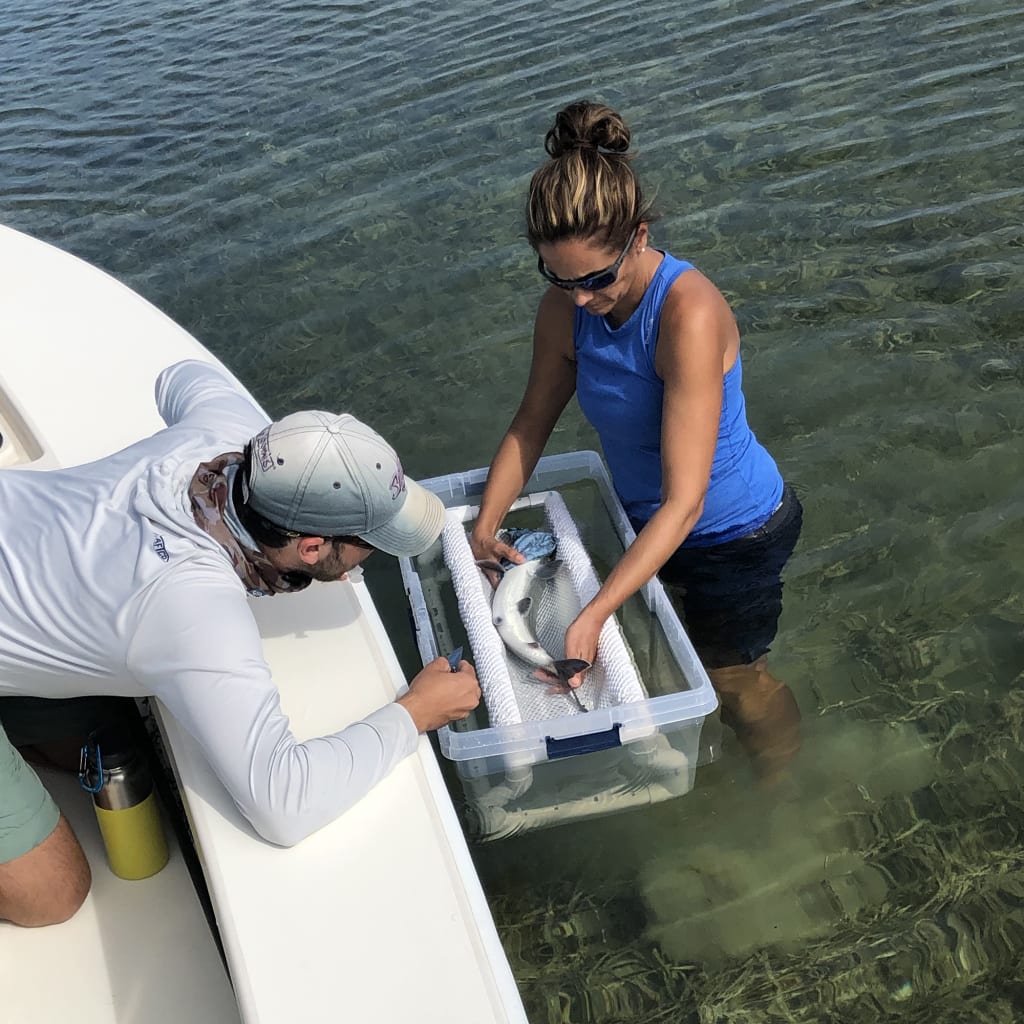A three-year study by Florida International University and the nonprofit Bonefish & Tarpon Trust found bonefish in Biscayne Bay and the Florida Keys carry pharmaceutical contaminants in their blood and other tissues.
Bonefish are a strictly recreational fishery The findings are one more red flag as Florida continues to face mounting red tide outbreaks and other water quality troubles.
“Coastal fisheries face increasing threats associated with human-based contaminants,” said Jim McDuffie, president and CEO of the Bonefish and Tarpon Trust in a joint statement with university researchers. “Pharmaceuticals are an often overlooked dimension of water quality and their presence in South Florida bonefish is cause for concern. These contaminants pose a significant threat to the flats fishery, an important part of Florida’s recreational saltwater fishery, which has an annual economic impact of $9.2 billion and directly support over 88,500 jobs.”
Launched in 2018, the study team includes FIU and Bonefish and Tarpon Trust research associates, in partnership with Sweden’s Umeå Unversity and the University of Agricultural Sciences.
Out on the water, the team sampled 93 fish in south Florida, finding an average of seven pharmaceuticals per bonefish. One fish showed traces of 17 medications.
“The list includes blood pressure medications, antidepressants, prostate treatment medications, antibiotics, and pain relievers,” according to the researchers. They “also found pharmaceuticals in bonefish prey — crabs, shrimp and fish — suggesting that many of Florida’s valuable fisheries are exposed, and not only the bonefish fishery.”
It’s the latest in years of discoveries about how human medication, carried by municipal wastewater systems, end up in fish.
In 2002 the U.S. Geological Survey published data showing that 80 percent of 139 streams sampled in 30 states contained traces of hormones, steroids, and other drugs. In 2003, researchers in Texas reported traces of the antidepressant medications Prozac and Zoloft in the freshwater Trinity River basin north of Dallas.
In brains and liver of the Texas fish sampled, they found concentrations as high as 30 parts per billion drug traces – but levels in edible fish muscle were much lower.
Winter flounder in New York’s Jamaica Bay are another famous example. Studies there and in other waterways near New York City point to pharmaceutical traces in urban wastewater flows as endocrine disruptors that may affect the flounder population’s spawning potential.
Jennifer Rehage, the lead researcher on the Florida bonefish project, a coastal and fish ecologist and associate professor at the FIU Institute of Environment, presented the study’s findings at a Bonefish and Tarpon Trust panel event in Tallahassee, Fla., in early 2022.
“These findings are truly alarming,” said Rehage. “Pharmaceuticals are an invisible threat, unlike algal blooms or turbid waters. Yet these results tell us that they are a formidable threat to our fisheries, and highlight the pressing need to address our longstanding wastewater infrastructure issues.”
Drug traces are not removed by conventional wastewater treatment.
“They remain active at low doses, can be released constantly, and exposure can affect all aspects of fish behavior, with negative consequences for their reproduction and survival,” the researchers noted. “Pharmaceutical contaminants have been shown to affect all aspects of the life of fish, including their feeding, activity, sociability, and migratory behavior.”
“These troubling findings underscore the urgent need for Florida to expand and modernize wastewater treatment facilities and sewage infrastructure statewide,” said McDuffie of the Bonefish and Tarpon Trust.
McDuffie said recent action by Gov. Ron DeSantis’ s administration to fund water quality improvements is a start.
”Now we must expedite those efforts, increase investment over the long term, and pursue innovative solutions,” said McDuffie. “We must accelerate septic to sewer conversion, and in those places where sewage is not available, require the use of advanced septic technology. The health of our citizens and the coastal resources that support Florida’s economy depend on it.”







